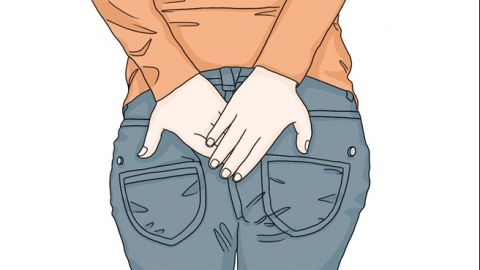What is a small fleshy lump that has appeared near the anus?
Generally, the appearance of a small fleshy lump around the anus may be caused by prolonged sitting leading to local venous return obstruction, excessive straining during bowel movements causing venous dilation, external hemorrhoids, rectal polyps, rectal prolapse, and other related conditions. It is recommended to seek timely medical consultation to determine the specific cause and receive appropriate treatment under a physician's guidance. A detailed explanation is as follows:

1. Prolonged Sitting: Maintaining a seated posture for extended periods can hinder blood circulation in the anal venous plexus, resulting in blood stasis and venous dilation, which may gradually form a small fleshy lump. This is commonly seen in office workers. It is recommended to stand up and move for 5–10 minutes every hour of sitting, choose breathable seating, and engage in activities such as walking or jogging to promote blood circulation around the anus.
2. Excessive Straining During Bowel Movements: Excessive force during defecation increases local pressure in the anal area, causing congestion and swelling of the perianal venous plexus, which may form a small fleshy lump and could be accompanied by anal discomfort after defecation. Adjust your diet by consuming more fiber-rich foods such as celery, spinach, and apples, and drink 1500–2000 milliliters of water daily.
3. External Hemorrhoids: Varicose veins at the anal margin can form soft masses, presenting as a small fleshy lump near the anus, which may be accompanied by pain or itching after defecation. Patients may use Ma Yinglong Musk Hemorrhoid Ointment, Gangtai Ointment, or Compound Carrageenan Suppositories as directed by a physician to alleviate symptoms.
4. Rectal Polyps: These are benign growths arising from the rectal mucosa that may protrude through the anus during defecation, forming a small fleshy lump. They usually do not cause significant pain but may occasionally lead to rectal bleeding. If the polyps are large or grow rapidly, endoscopic polypectomy should be performed by a physician to completely remove the polyps and prevent disease progression.
5. Rectal Prolapse: This occurs when part or the entire wall of the rectum displaces downward and protrudes through the anus, forming a small fleshy lump. In early stages, it may retract spontaneously, but later may require manual repositioning. Patients with mild prolapse can perform anal lifting exercises daily to strengthen the anal sphincter muscles. In severe cases, rectal suspension surgery may be required to fix the rectum to surrounding tissues and improve the prolapse condition.
It is important to maintain proper anal hygiene by washing the area daily with warm water and avoiding vigorous rubbing. Maintain a regular sleep schedule, avoid staying up late, and adopt healthy lifestyle habits to reduce anal discomfort and promote perianal health.







